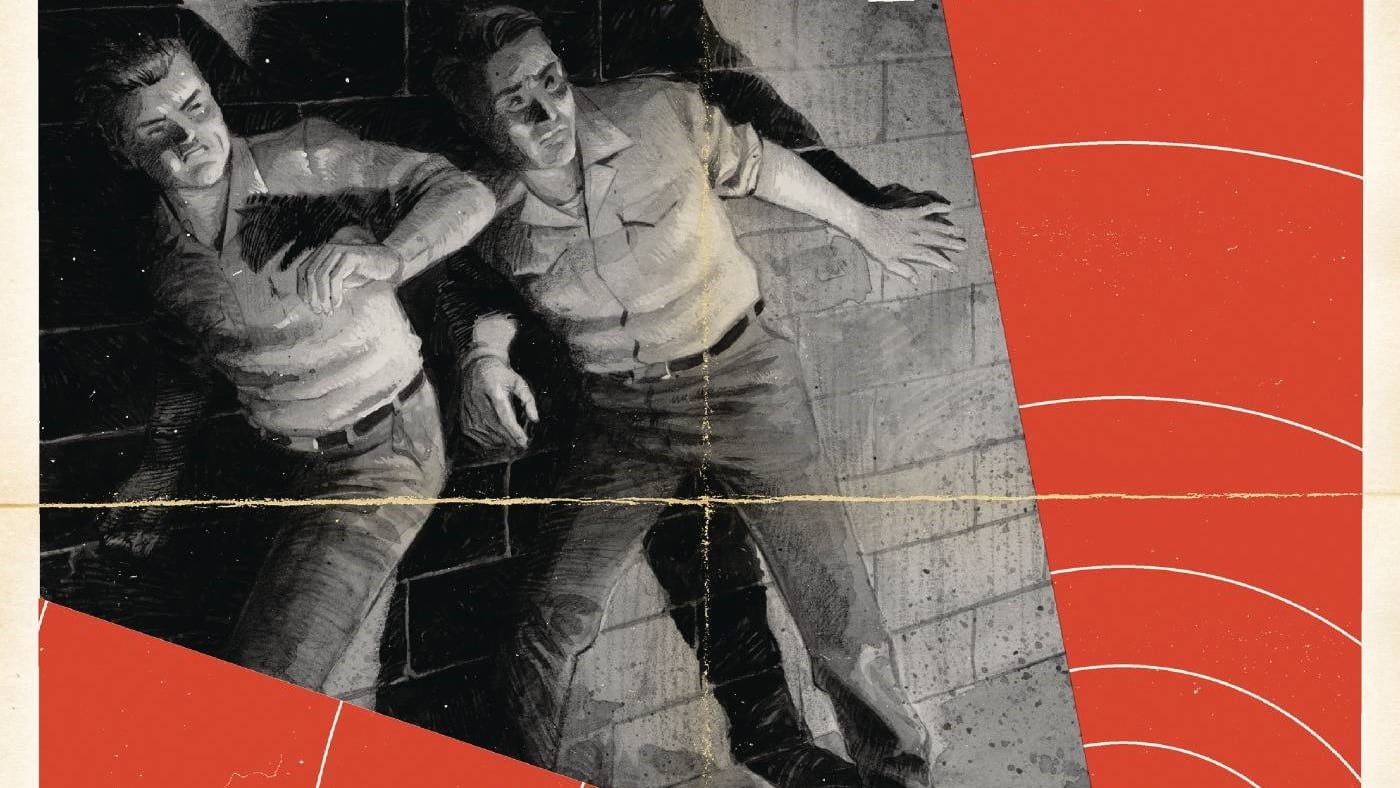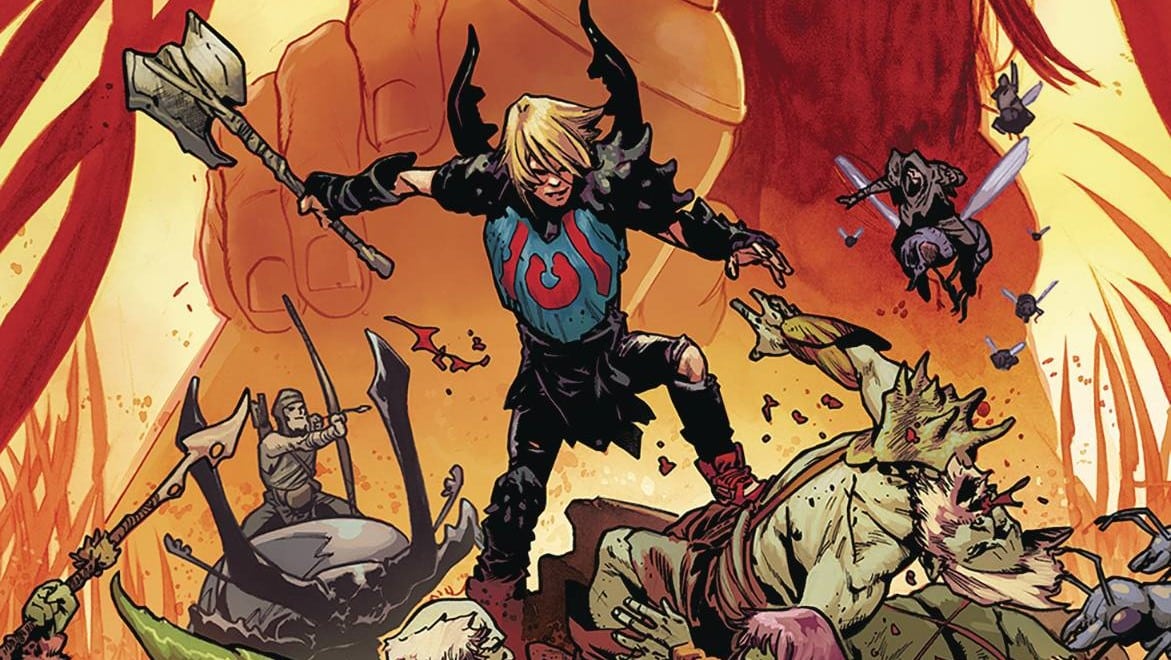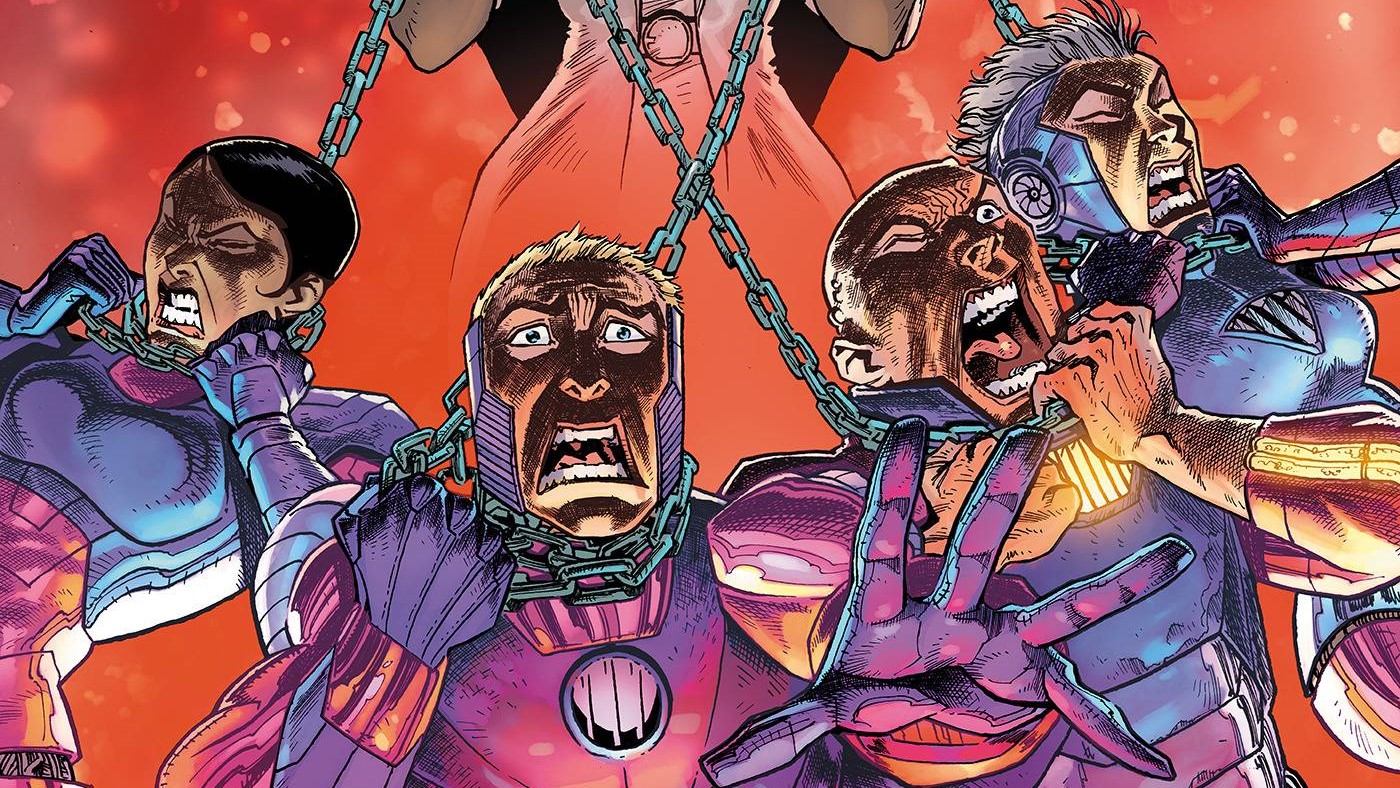She’s a futuristic techno-horror story about the obsessions of a toxic-relationship. He’s a modern-day retelling of Beowulf that pits biker against beast. Let’s see if sparks fly when Zoe Tunnell reviews AfterShock’s Lonely Receiver #1 and Robert Secundus reviews AWA’s Grendel, Kentucky #1.
Lonely Receiver #1
Writer: Zac Thompson, Artist: Jen Hickman, Letterer: Simon Bowland, Publisher: AfterShock
Can you ever be alone when you’ve intertwined your life with another person’s? Do you owe a debt to those who have helped shape you into the person you are, and if so, could you ever repay it? Lonely Receiver, from writer Zac Thompson, artist Jen Hickman and letterer Simon Bowland, asks these questions and more in a haunting debut spotlighting a fragmenting relationship infused with cyberpunk body-horror.
Lonely Receiver stars Catrin, a young woman coming off a violent break-up and not wanting to be alone again. Using Cronenberg-ian technology, she crafts a new AI partner from a series of personality questions and personal preferences, coming together to form Rhion, her ideal woman. The issue immediately jumps a decade ahead, into a well-worn relationship beginning to show its cracks.
Despite being grounded in sci-fi concepts, such as Rhion’s ability to process data and communicate with hundreds of people at any moment, the tension and pain in Receiver’s arguments feel real and authentic. More than once in my read-through, I was left going, “Wait, I’ve had this fight before,” which isn’t something too many comics can claim. Catrin’s role in Rhion’s creation used as guilt-inducing leverage, Rhion failing to understand Catrin’s needs as a monogamous partner, every verbal stab and scream feels raw and genuine in a truly impressive fashion.
Rhion’s birth, where she is slowly assembled from virtual sinew and bone as Catrin molds her personality, establishes a sense of unease from the beginning. This graduates to full-blown horror when The Garden is introduced. A failsafe measure Catrin forces upon Rhion where they are ejected into a virtual realm via falling into a temporary coma, eerie green tendrils spreading across their eyes. Intended as a private place where they can be honest and intimate with each other, it instead is used as a weapon against Rhion, corrupting it into a tool of abuse when Catrin doesn’t get her way. And in the perverted sanctuary that should be the couple’s most private space…something is watching.
That eldritch cyber-horror’s identity remains unclear, but they play a pivotal role in setting up the core of Lonely Receiver‘s remaining issues. After a particularly nasty fight, with both Rhion and Catrin exchanging insults and physical blows, Rhion disappears. Suddenly, without explanation. This leaves Catrin with a single question: if you love someone, love them so much it consumes every part of your being, what would you do to get them back?
Thompson’s script is powerful and effective, but the real stars of Lonely Receiver are Hickman’s art and Bowland’s lettering. Hickman’s figures are incredibly human and expressive, amplifying every moment of rage and despair. The coloring decisions, both on the page and in the lettering, continue this excellence. Awash in warm neon hues when things are good and slowly giving way to paler, cooler palettes when things fall apart, the book is a stunner.
One particular feat of note is the colors within The Garden. Ostensibly green due to its namesake’s nature connection, as the unsettling reality of the realm sets in, it becomes clear that the eerie, pallid green tones are the furthest from natural. A setting of peace and comfort becomes sickly and unbearable entirely through a single coloring choice. Through bold creative decisions like this, Hickman’s coloring sets the mood of Receiver as much as any dialogue.
Bowland’s lettering is no slouch, of course, seamlessly incorporating text message chains and otherworldly messages into the snappy, well-structured balloons and captions to form a slick, compelling whole. When the unknowable horror enters the scene, their dialogue’s broken, scrawled nature makes them feel like an unnatural intrusion into the comic itself rather than merely a spooky monster, a feat successful entirely due to Bowland’s skill.
Lonely Receiver is a five-issue miniseries, so things are likely to worsen for Catrin and Rhion before things are over. While other series with similar focuses would leave me worried over potential gross lionization of toxic relationships or exploitative depictions of abuse, issue #1 gives me, ironically, hope. Catrin and Rhion likely won’t get back together and will face a long, painful road ahead of them, but it is one I am confident will be respectful, authentic and gorgeous to behold.
Grendel, Kentucky #1
Writer: Jeff McComsey, Artist: Tommy Lee Edwards, letterer: John Workman, Publisher: AWA

Grendel, Kentucky is an often fascinating (and at times baffling) comic to experience. The premise: Take the plot of Beowulf, set it in the modern day, and replace Vikings with Bikers. It is, in my mind, a near perfect revision of the original.
With this sort of thing, I always want the updated tropes to, 1. feel close enough to the original that there is a connection to that original, or even a sense that original is being honored, 2. feel novel enough that the update was worth making in the first place, and 3. feel complete enough to stand on their own without reference to the original.
And Grendel, Kentucky succeeds at all three. It feels like it gets Beowulf, even the parts that are less popularized. The vast majority of this issue is not devoted to battle with Grendel, but rather to the equivalent of the opening few hundred lines of the poem, which concern the arrival of Beowulf at the mead-hall Heorot, and so there is plenty of space to see just how the culture of the biker gangs compare, just how similar they are, and just how fresh the story feels in this new setting.
And so too is there ample opportunity to develop the characters on their own, as substantial individuals, to such a degree that I feel anyone who hasn’t even heard of Beowulf would still enjoy this comic. Marnie isn’t just a female Beowulf a few hundred years later: She is a fascinating character in her own right, with a moral code and a kind of kingship that differs from Beowulf’s intriguingly.
But in that space, and in that development, a few extremely odd things become apparent. First of all, the story briefly dips into some problematic tropes (Dear male writers: You do not need to have your Badass Female Protagonist proclaim that her father figure “didn’t give a shit that [she] was a girl,” and that that is why she is a Badass Female Protagonist). Second of all, the decompressed nature of the opening feels like the first chunk of a graphic novel, not the first issue of a serial comic. The core conceit of the series as described in the solicits has not even begun to be addressed by the end of the first issue; all we have on the last page is a glimpse of the monster. If a reader had just bought this blindly off the rack, they might leave this issue thinking this was a realistic crime story, rather than a bikers vs. monster story. It was so bizarrely paced that when I got to the end, I double checked that I had not been given a faulty review copy; it feels like it just stops after 21 pages because that’s when comics stop.
Does that mean this is one to wait for a trade? Not necessarily; if you go into the book knowing it’s going to be oddly paced, and that this issue focuses on character and world-building without getting to the central premise, you won’t be disappointed. Tommy Lee Edwards’ rough-hewn world, a world of edges, scratches and flame, is easy to fall into, and if you love Beowulf, on near every page there’s a point of connection or revision to explore.







